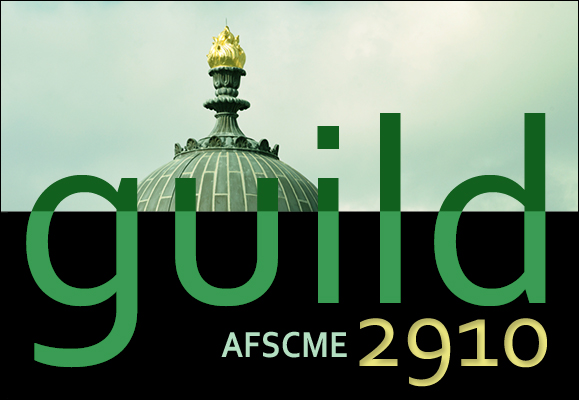A message for the season:
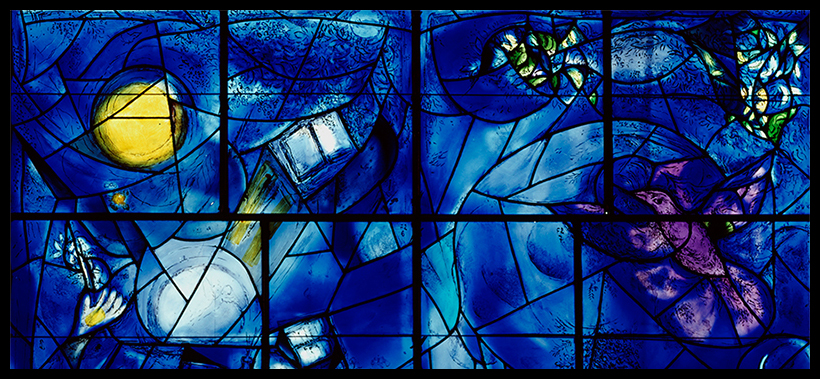
Detail. Marc Chagall, American Windows (1977), Art Institute of Chicago
Cultures around the world have long held feasts and celebrated holidays near the time of the Winter Solstice, the shortest day of the year. Fire and light are traditional elements of celebrations held in the darkest days. Movement toward light is a key element of this cycle, as the limits of darkness are marked by the Winter Solstice. Hope for renewal follows, as days gradually grow longer and lighter.
In the United States, several holidays: Christmas, Kwanzaa, and Hanukkah, and the Winter Solstice, are celebrated during the month of December each year. Other cultures and religions also share in the symbolism of light and darkness, and the sentiment of “peace on earth, good will toward all.”
The wish for peace and goodwill across the earth is enshrined in a popular carol, based on a poem, originally written in the midst of the Civil War by William Wadsworth Longfellow. Having lost all hope, Longfellow found it renewed in a Christmas context, despite the realities of a grueling civil war and the significant personal tragedies he had recently suffered. While this poem reflects an historical moment in U.S. history, it can serve as a touchstone of American literature to inspire us all toward hope, peace, good will, and looking forward, as we approach the end to this difficult year of pandemic:
I Heard the Bells on Christmas Day
Their old familiar carols play,
And wild and sweet the words repeat
Of peace on earth, good will to men.
I thought how, as the day had come,
The belfries of all Christendom
Had rolled along the unbroken song
Of peace on earth, good will to men.
And in despair I bowed my head:
“There is no peace on earth,” I said,
“For hate is strong and mocks the song
Of peace on earth, good will to men.”
Then pealed the bells more loud and deep:
“God is not dead, nor doth he sleep;
The wrong shall fail, the right prevail,
With peace on earth, good will to men.”
Till, ringing singing, on its way,
The world revolved from night to day,
A voice, a chime, a chant sublime,
Of peace on earth, good will to men!
Christianity is based in the life and teachings of Jesus of Nazareth, who taught that peace could never be achieved apart from righteousness and justice. Throughout the Christian scriptures, faith and its practitioners are spoken of as a light. The holiday of Christmas celebrates the birth of Jesus, considered the son of God and a savior for man, to an impoverished couple traveling through the darkest part of Winter. Guided by a bright star, kings and shepherds alike were drawn to the scene of peace, light, and promise where the family birthed their son in a lowly manger. Today, Christmas is celebrated in part with lighted candles, lighted trees, and outdoor Christmas light displays, which celebrate the light that was brought to earth.
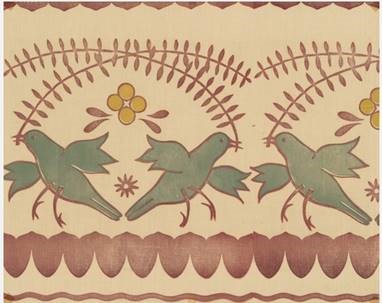
Barbara Warren for the WPA, Doves with Olive Branches (1937-38)
The Hebrew word for peace is shalom, and along with truth and justice, is a core value of Jewish culture and religion. Known as the festival of lights, Hanukkah celebrates the miracle that in the rededicated Second Temple in Jerusalem, just a day’s supply of oil allowed the menorah to remain lit for eight days. As Hanukkah candles are lighted over eight days, Hanukkah celebrates the miracle of lights, emphasizes peace and brotherhood, and creates a time to come closer to one another in reconciliation.
Lighting of candles is also central to the holiday of Kwanzaa, with the first candle representing the concept of unity. The key values of Kwanzaa aid in building and reinforcing family, community and culture. Kwanzaa’s spiritual principles also reinforce associated values of truth, justice, propriety, harmony, balance, reciprocity and order, to enhance relationships to ancestors and children.
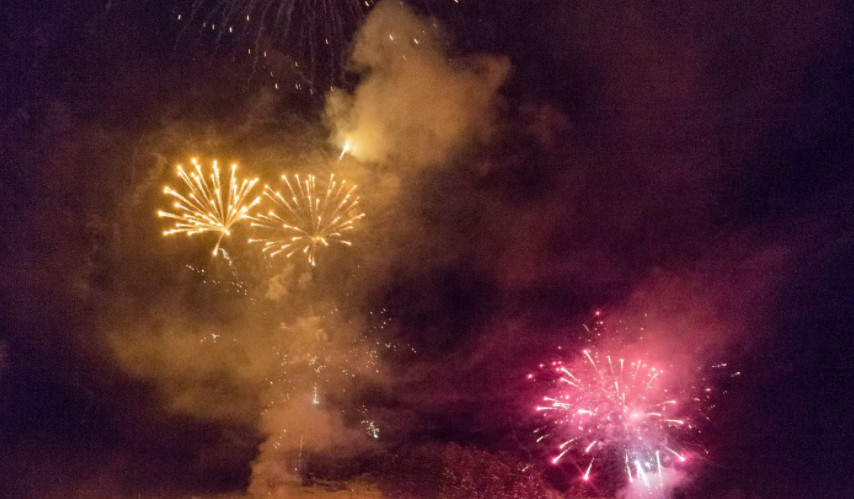
Detail. Carol Highsmith, Fireworks at “Warmth of Winter” Exhibition (2016), Library of Congress
Diwali is the Hindu “Festival of Lights,” celebrated on the darkest new moon night in the Kartika month of the Hindu lunar calendar, coinciding with a date sometime in between mid-October and mid-November each year. In the Hindu religion, there is a prayer: “May there be peace in the celestial regions and may there be peace on earth.” Among the various paths to peace, the Hindu tradition places an emphasis on universal acceptance and toleration as two core elements for sustainable peace.
In Islam, the Quran teaches that hope is the source of light to create aspiration for lasting happiness, both worldly and eternal. The Arabic word for peace is salaam, and in the Islamic tradition, it connotes that there will be an era in which justice, well-being, security, peace and brotherhood will prevail among humanity.
Native Americans believe in striking balance, peace, and harmony among all humans, animals, plant life, and the earth. Many ancient indigenous people made astronomical observations centered on light and the life-giving properties of the sun, while the Winter Solstice has been a time to honor the ancient sun deity. North American indigenous peoples long ago developed knowledge of the intricate workings of the solar system, closely connected to their understanding of the harmony and interconnectedness of the human and natural world. They built temple pyramids or mounds to track the sun—the remains of one massive setting from around the year1100 survives in what is now Cahokia, Illinois, and is sometimes called “The City of the Sun.”
Our list could go on. Chinese traditions based in multiple religions and histories include spectactular fireworks and an annual lantern festival. The Tazaungdaing festival of lights in Burma marks the end of the rainy season. Japan is known today for its elaborate Winter light installations. Across the globe, celebrations that return light to the darkness while awaiting its natural return bring wonder, joy, and hope for a world at harmony.
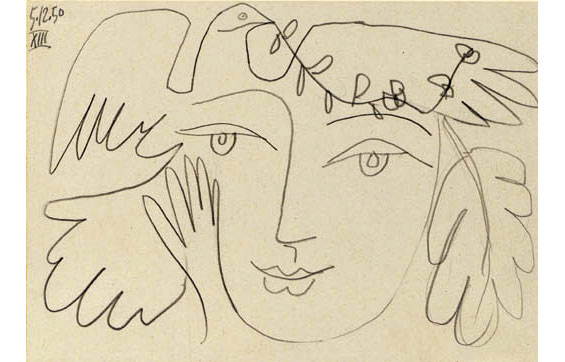
Pablo Picasso, Colombe au Rameau d’Olivier, Visage, Main et Feuille de Chêne (1950)
Many of these cultural traditions and symbols flow into the Guild values for a just society and optimum working conditions: truth, justice, well-being, security, harmony, reciprocity, brotherhood and sisterhood, universal acceptance and toleration, and—of course—peace and good will for all.
The Guild hopes for an end to the 2020 pandemic, and that you all stay safe and secure.
The Guild wishes you peace, shalom, salaam, and any other peace important to you, and to us all, in this Holiday Season of 2020.
In Solidarity with All,
Anne Toohey
Guild President
David Fernández-Barrial
Guild Chief Steward
 Pablo Picasso, Bound Hands II (1952)
Pablo Picasso, Bound Hands II (1952)
A note: “Christmas Bells” by Henry Wadsworth Longfellow was written on December 25, 1863 and originally appeared in February, 1865. It can be read online in full on the poets.org website.
